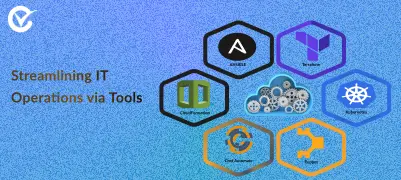Cloud automation is the process of using software, scripts, and other tech to automatically spin up, manage, and optimise cloud resources & services. And its a crucial part of achieving that coveted mix of cloud computing - agility, scalability, efficiency, and cost-effectiveness. Cloud automation can cover all sorts of cloud management tasks from setting up infrastructure to deploying apps, managing config and keeping an eye on things.

Top Cloud Automation Tools for Seamless IT Operations
In the rapidly evolving landscape of IT, cloud automation services have emerged...



